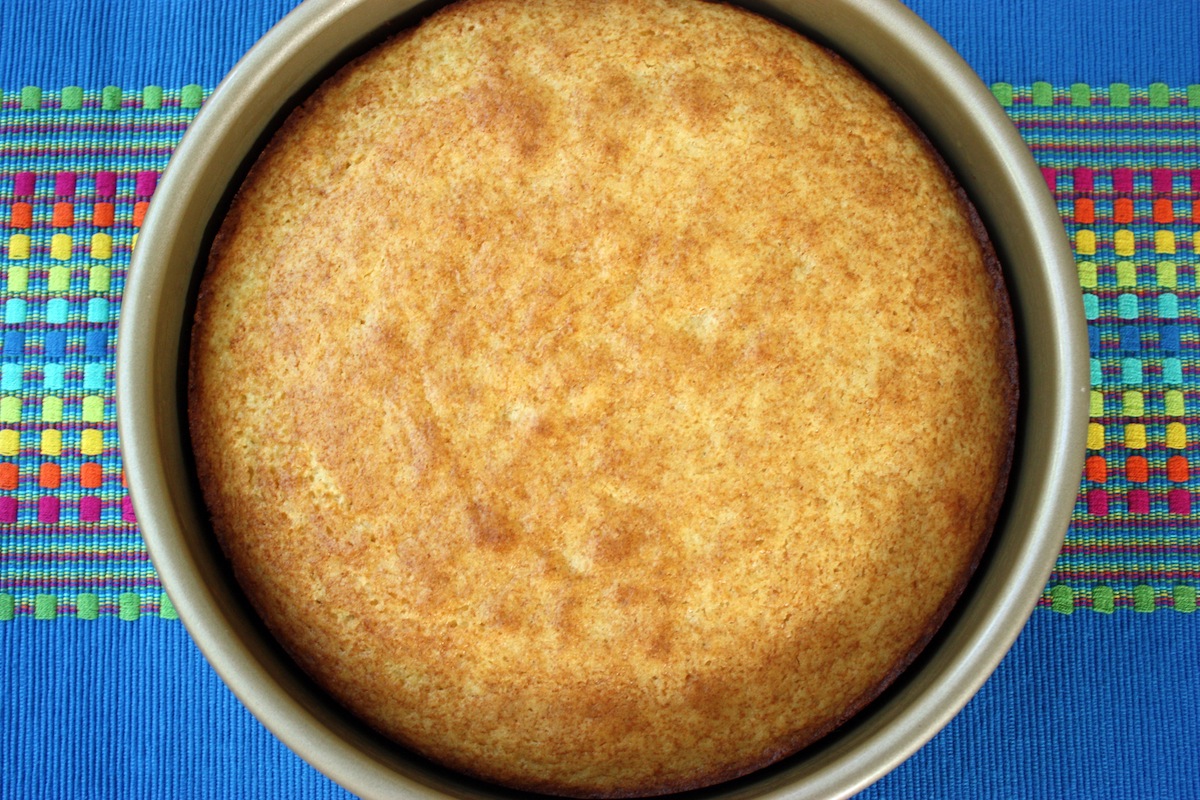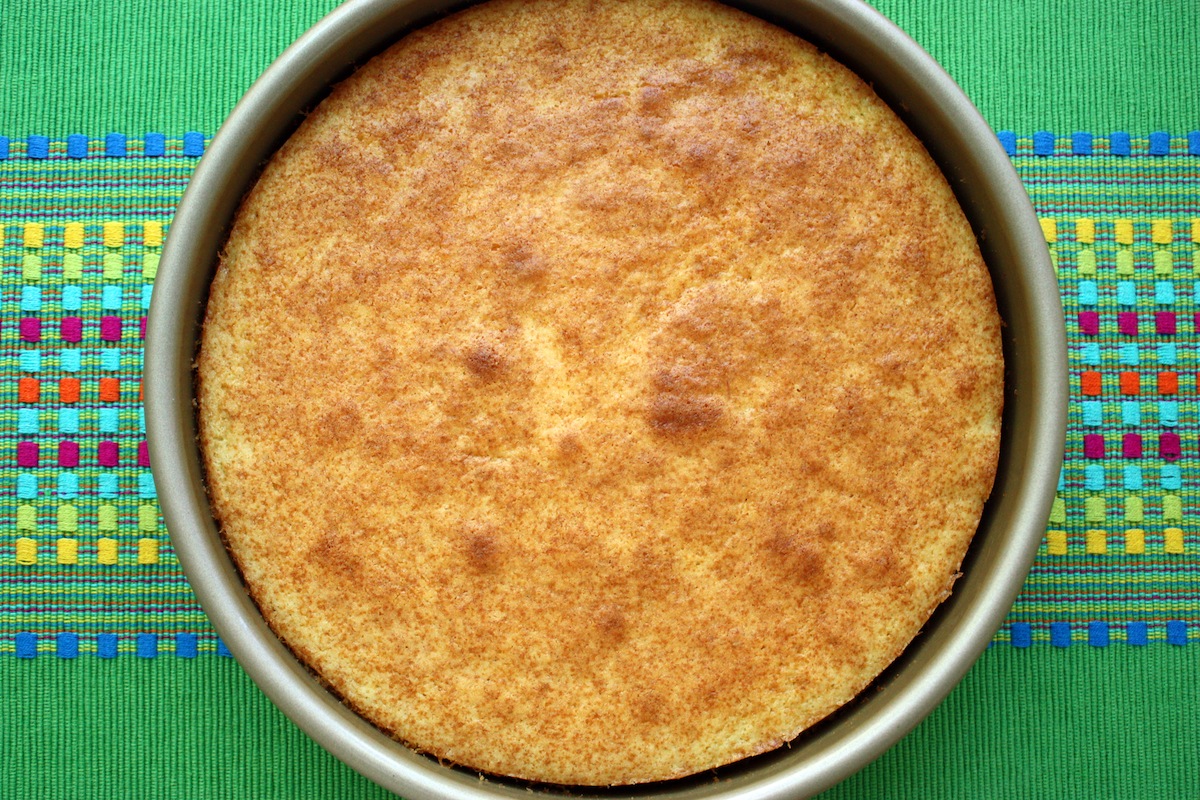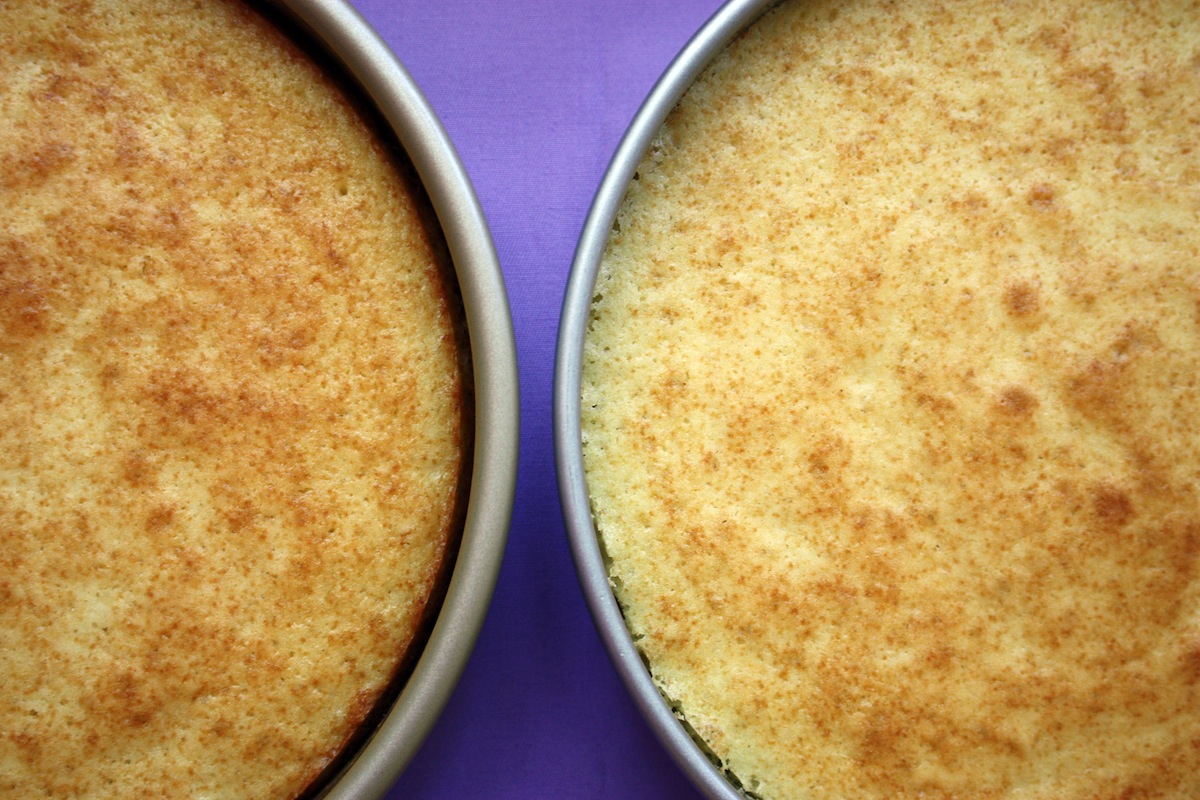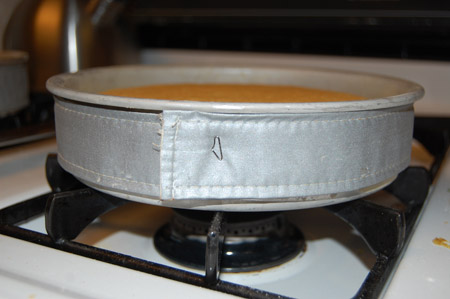- Always aerate your flour before measuring.
- If you don’t aerate your flour your dough will be too dry.
- Aerating is NOT the same as sifting.
- Do not sift flour before measuring unless the recipe indicates it.
- See how to aerate flour in this short video.
How To Aerate Flour
No Knead Bread Solutions
Questions about your no knead bread or rolls? These notes should help…
My dough didn’t rise.
- No knead dough doesn’t rise like standard yeast breads, it only puffs up and gets bubbly. It will be a little bigger after the resting time but don’t look for a much larger volume.
- Your yeast may not be fresh and should not be used past the expiration date. Even with a good expiration date, yeast has a short shelf life once a package is opened. Even with the small packets, once it’s opened, yeast should be tightly sealed and kept in the freezer, not refrigerated.
- Your water may have been the wrong temperature. For the faster method, hot tap water is usually around 125 to 130°F. Anything hotter than that is too hot. And boiling water is definitely out. For the overnight method, cold to room temperature water works.
- You changed the recipe. It’s best to follow the recipe exactly for the first time. That way you know it works. Don’t change the recipe the first time, paying attention to every detail. You can get creative later on.
My dough was too dry.
- You did not aerate your flour before measuring. Flour always settles in the bag or container and must be aerated before measuring; otherwise, you will be using too much flour. To aerate flour, using a large spoon or spatula, stir the flour around to incorporate some air. To see a short video on how to aerate flour, click here.
- You measured the flour incorrectly. To measure flour, use a flat-topped measuring cup, gently spoon the aerated flour into the cup until it’s mounded above the rim and level off the excess with the back of a knife. Do not tap the cup or the container of flour.
- You changed the recipe or used whole wheat flour.
My dough was too runny.
- You used too much liquid or not enough flour. Use a cup specific for measuring liquids, have it on a flat surface and view it at eye level to make sure your liquid is at the correct line.
- You sifted the flour before measuring, which would cause you to use less flour than required. Never sift flour before measuring unless specified in the recipe. You should only aerate your flour before measuring. (see my Flour Basics on how to aerate flour)
- You changed the recipe.
My bread wasn’t cooked inside.
- Your oven (and pot) were not preheated long enough. Use an oven thermometer to make sure your oven has reached 450°F. It can take over half an hour.
- You sliced it too soon. After bread is removed from the oven, it will continue to cook inside. It’s best to let it cool completely before slicing (I know it’s hard to wait!)
My bottom crust was too hard.
- Your pot was too close to the heat. Try raising the oven rack so the bottom is not as close to the heat.
- Your oven may be hotter than you think. Use an oven thermometer to assure your oven is the proper temperature.
- Try placing a baking pan on the rack below the bread to block some of the heat.
- Try a slightly lower temperature by preheating to 450°F but lowering the temperature to 425°F to bake.
- If using a black cast iron pot, try another one that is not black.
- Do not bake any longer than indicated.
I don’t have a Dutch oven.
I have only made this bread in an enameled cast iron Dutch oven (Le Creuset) but other people have commented that they had success using:
- a glass pyrex dish with a lid
- a stainless steel pot with a lid
- a stainless steel pot with foil on top and the original pot lid over the the foil
- a clay baker
- a springform pan with an aluminum foil top
- a pizza stone with a stainless steel bowl as a cover
- several people posted here that they used a black cast iron pot with a lid
- a roasting pan with a tightly sealed foil heavy duty top
- a heavy soup pot with a lid
- a corning dish with a glass lid
- a Romertopf clay pot
- a crock pot bowl with a lid
- two nonstick bread pans, no parchment paper – put the dough in one of the bread pans, flip the other pan upside down over the first pan and put binder clips on the two ends to hold the pans together.
- an oven-safe stoneware insert (removed from a slow cooker) with a cookie sheet over it as a lid.
- a cast iron skillet and foil as a lid
- 2 1/2 quart corning ware casserole.
Keep in mind that any lid must be tight fitting because you need to create steam inside the pot and the lid should have an oven-proof handle (not plastic). Your pot will need to hold at least 3 quarts but 5 to 6 quarts is most common. Or… You can make my No Knead Ciabatta Bread or No Dutch Oven Bread – they both bake on a pan, no Dutch oven needed. Click here for the recipes.
My parchment paper stuck.
- If your parchment paper stuck it’s from using an inferior brand. Reynolds brand will never stick. If you can not get Reynolds brand you need something to lift the dough and place it in the Dutch oven. You can try using a well floured kitchen towel to transfer the dough, letting the dough roll off the towel into the hot pot. Do not leave the towel in the pot, only use it as a means of lifting the dough. Do NOT use wax paper in a hot oven. It will melt onto the bread and it will be ruined. I don’t use a towel because my dough always sticks to the towel. Parchment paper makes the job super easy but inferior papers can stick. I always use Reynolds brand – it never sticks.
I don’t have parchment paper.
- You can make no knead bread without parchment paper. Parchment is the easiest way to lift the dough and place it into the hot pot.
- Another way is to place the dough directly into the (ungreased) hot pot. You have to be careful because the pot is very hot.
- Some recipes use a floured towel to rest the dough and you would use the towel to transfer the dough into the pot, letting it roll off the towel in to the hot pot. For me, the dough usually stuck to the towel, even though it’s floured, so I switched to parchment paper.
Can I add extras to the dough and when should I add them?
- You can add extras to your dough at the very beginning when you first mix it up.
- I have added nuts, raisins, sugar, caraway seeds, 10-grain cereal, oats, and olives. You can see all my variations in the Breads category.
- Other commenters say they have added: cheese, rosemary, Italian herbs, crushed garlic, garlic powder, blueberries, cranberries, honey, cinnamon, molasses, jalapeno peppers, olive oil, sun dried tomatoes, maple sugar, and “Everything But The Bagel.”
Can I double the recipe?
A helpful woman named Marion says yes. “I doubled everything, flour, yeast, salt and water. Used 5 quart Dutch oven. It was a little tricky getting the folded dough into the paper basket but otherwise smooth sailing! I’ve seen this question up here many times and no one has answered it, so that made me think it might be a no-go but actually it’s great.” (Thank you, Marion)
I live at a high altitude. Any changes needed?
Several people have commented that they live at high altitudes (from 4,500 to 8,400 feet) and made no changes to the recipe, and their bread turned out very well.
How do I aerate flour?
- Flour must be aerated before measuring because it often settles in the bag or container making it heavy and compact, resulting in too much flour being measured. Aerating basically means fluffing it up and is not the same as sifting. Flour should not be sifted before measuring unless the recipe states to do so. Sifting will result in too little flour being measured.If you dip into flour without aerating, you will be getting too much flour and your dough will be too dry. To aerate flour you simply stir it around with a spoon before measuring. To see a short video on how to aerate flour, click here.
- After aerating, be sure to use a flat-topped dry measuring cup. There are two ways to measure the flour: 1) Scoop & Level – Gently scoop the flour up with a spoon and sprinkle it into your measuring cup until it’s mounded above the rim. Do not tap the cup or the container of flour. Finally, level off the excess flour with the back of a knife. 2) Dip & Level – Gently dip your measuring cup into the flour until it’s mounded above the rim and level off the excess flour with the back of a knife. Sources vary but in my kitchen, a cup of flour weighs between 4 1/2 and 5 ounces.
Can I make it with Gluten-Free flour?
- Well…. you can make it with gluten free flour but you may not like it. I tried it and the loaf was smaller and more dense and chewy, without the traditional big holes and it didn’t taste anything like the original recipe. I tried it once but nobody wanted to eat it.
Can I make it with Sourdough Starter?
- I’m sorry I have no experience with sourdough starter but there are many comments from those who have used it.
Don’t you need sugar to feed the yeast?
- No. You do not need sugar to activate the yeast. This is a half-true old wives tale left over from when yeast wasn’t preserved as well as it is today.
Doesn’t hot water kill the yeast?
- No. Hot water does not kill yeast but boiling water will. Today’s yeast is more sturdy and accommodating than years ago and can tolerate water or liquid up to 130°F. The killing point for yeast is 140°F.
What size Dutch oven do I need?
- The ideal size of Dutch oven for no knead bread is 5 or 5 1/2 quart. I make mine in a 5 1/2 quart enameled Dutch oven but I have also made it in a Dutch oven that measures 3 1/2 quarts.
A Final Note: If you have followed my recipe exactly with no changes at all and it doesn’t look right before baking, don’t make adjustments to try to “fix” it. Trust the recipe, don’t change anything and continue as directed. You may be surprised that it turns out after all.
Problems with Yeast Baking?
WITH BAKING, IT’S IMPORTANT TO FOLLOW THE RECIPE EXACTLY, RIGHT DOWN TO THE SIZE OF THE PAN. EVEN THE SMALLEST CHANGE CAN CAUSE A RECIPE TO FAIL.
Dough Didn’t Rise
- Your liquid may have been the wrong temperature. Using an instant read thermometer is the best way to know it’s correct.
- Your yeast may not be fresh and should not be used past the expiration date. Even with a good expiration date yeast has a short shelf life once a package is opened. Even with the small packets, once it’s opened, yeast should be tightly sealed and kept in the freezer, not refrigerated.
- You used the wrong size pan. Using a larger pan than is noted lets the dough spread sideways instead of rising upwards.
- You changed the recipe. It’s important to follow the recipe exactly, paying attention to every detail.
Dough Too Dry
- You did not aerate your flour before measuring. Flour always settles in the bag or container and must be aerated before measuring; otherwise, you will be using too much flour. To aerate flour, using a large spoon or spatula, stir the flour around to incorporate some air. To see a short video on how to aerate flour, click here.
- You measured the flour incorrectly. To measure flour, use a flat-topped measuring cup, gently spoon the aerated flour into the cup until it’s mounded above the rim and level off the excess with the back of a knife. Do not tap the cup or the container of flour.
- You used a different flour than stated in the recipe.
Dough Too Sticky
- You used too much liquid or not enough flour. Use a cup specific for measuring liquids, have it on a flat surface and view it at eye level to make sure your liquid is at the correct line.
- You sifted the flour before measuring, which would cause you to use less flour than required.
- You used a different flour than stated in the recipe.
Don’t you need sugar to feed the yeast?
- No. You do not need sugar to activate the yeast. This is a half-true old wives tale left over from when yeast wasn’t preserved as well as it is today.
Doesn’t hot water kill the yeast?
- No. Hot water does not kill yeast. Today’s yeast is more sturdy and accommodating than years ago and can tolerate water or liquid up to 130 degrees F. The killing point for yeast is 140 degrees F.
Click here for my Flour Basics.
Click here for ideas on where to rise dough.
Click here for the difference between baking powder & baking soda.
My Parchment Paper Stuck
If your parchment paper stuck it’s from using an inferior brand. Reynolds brand always works for me. I got a cheaper parchment paper once and everything stuck to it. I only use Reynolds brand – it never sticks. (This is not a paid endorsement, I’m just sharing what works for me). NOTE: Wax paper is NOT the same as parchment paper. DO NOT USE WAX PAPER in the oven because it will melt onto your food.
Cake Strips to the Rescue
If you bake a lot of cakes there are two issues that need fixing. One is that they rise too much in the center and the other is that the edges get over-baked and dry. A cake strip will fix that. Here is my yellow cake baked with no cake strip. It’s domed in the middle and the edges are overdone and dry.
 And here it is with a cake strip – perfectly flat and the edges are soft and evenly baked.
And here it is with a cake strip – perfectly flat and the edges are soft and evenly baked.
 A cake strip is easy to use. You just soak it in water for about 15 minutes, then press out the excess water and wrap it around the pan just before baking.
A cake strip is easy to use. You just soak it in water for about 15 minutes, then press out the excess water and wrap it around the pan just before baking.
It protects the edge of the pan from getting too hot and the cake will bake evenly. If you can’t find one, you can fashion your own using fabric. I have never done that but you can find lots of how-to’s in the internet. They’re also called baking strips for cakes.
While working on this recipe I was surprised by something I learned about cake pans. It’s about the color. I always knew that a dark pan absorbs more heat so baked goods will brown more than in a light colored pan. But I baked two cakes, both with cake strips, in two different pans that I considered light colored. But look at the difference…
 The pan on the left is my more expensive Williams-Sonoma Gold Touch pan that I never thought of as dark. The pan on the right is a cheaper silver colored pan (with no brand name so I don’t even know where I got it) but the cake in the cheaper silver pan came out perfectly. The edges were velvety soft and the cake didn’t brown too much. The one on the left was okay but the edges pulled away a bit and it browned a little more. Bottom line: use a silver colored pan and a cake strip for a perfect, soft, yummy cake.
The pan on the left is my more expensive Williams-Sonoma Gold Touch pan that I never thought of as dark. The pan on the right is a cheaper silver colored pan (with no brand name so I don’t even know where I got it) but the cake in the cheaper silver pan came out perfectly. The edges were velvety soft and the cake didn’t brown too much. The one on the left was okay but the edges pulled away a bit and it browned a little more. Bottom line: use a silver colored pan and a cake strip for a perfect, soft, yummy cake.
Speaking of cake, this simple yellow cake is one of my easy-to-make healthier cakes and it’s my go-to cake for all kinds of frosting and filling. It’s soft and not super sweet… and it’s made without butter. I’ll be posting the recipe soon, so get your cake strips ready! – Jenny Jones
Why Do Cookies Spread Too Much?
Linda asks… Hi Jenny….love your cooking videos…when I see that a new one is available, it is like Christmas around here. My question is this: I love making chocolate chip cookies but sometimes the dough spreads so thinly in the oven at 375o and tends to burn on the outer rim and be a little raw in the middle. I have tried lowering the temp to 365 but it still happens. I am wondering what the reason(s) might be for this?
My Response… It’s a common problem and there are a few things I can suggest…
1) Oven is not hot enough. Before placing cookies in the oven, make sure it has reached 375 degrees. You may not be waiting long enough for it to reach 375. An oven thermometer is very handy for this. I usually preheat my oven for 30 minutes.
2) Baking pan is too greasy. It makes sense that things will slide around on a greasy surface so try not greasing your pan and using parchment paper. The added bonus is there is no cleanup.
3) Baking pan is warm. There are two reasons this could happen. One is if you keep the baking pan on the stove while the oven preheats and the pan gets warm. The other is that you don’t let the pan cool completely when making a second batch.
Some other solutions are to shape the cookies and chill them in the fridge for 15 minutes or so. Then put them straight into the oven. If your pan fits, you can shape the cookies on the pan and put the whole thing in the fridge to chill, then put the cold pan in the oven. Also, don’t over-beat your dough. And avoid any substitutions like using whipped butter, etc. If this information doesn’t solve your problem, please send me the EXACT recipe as you make it and I will try to help.




